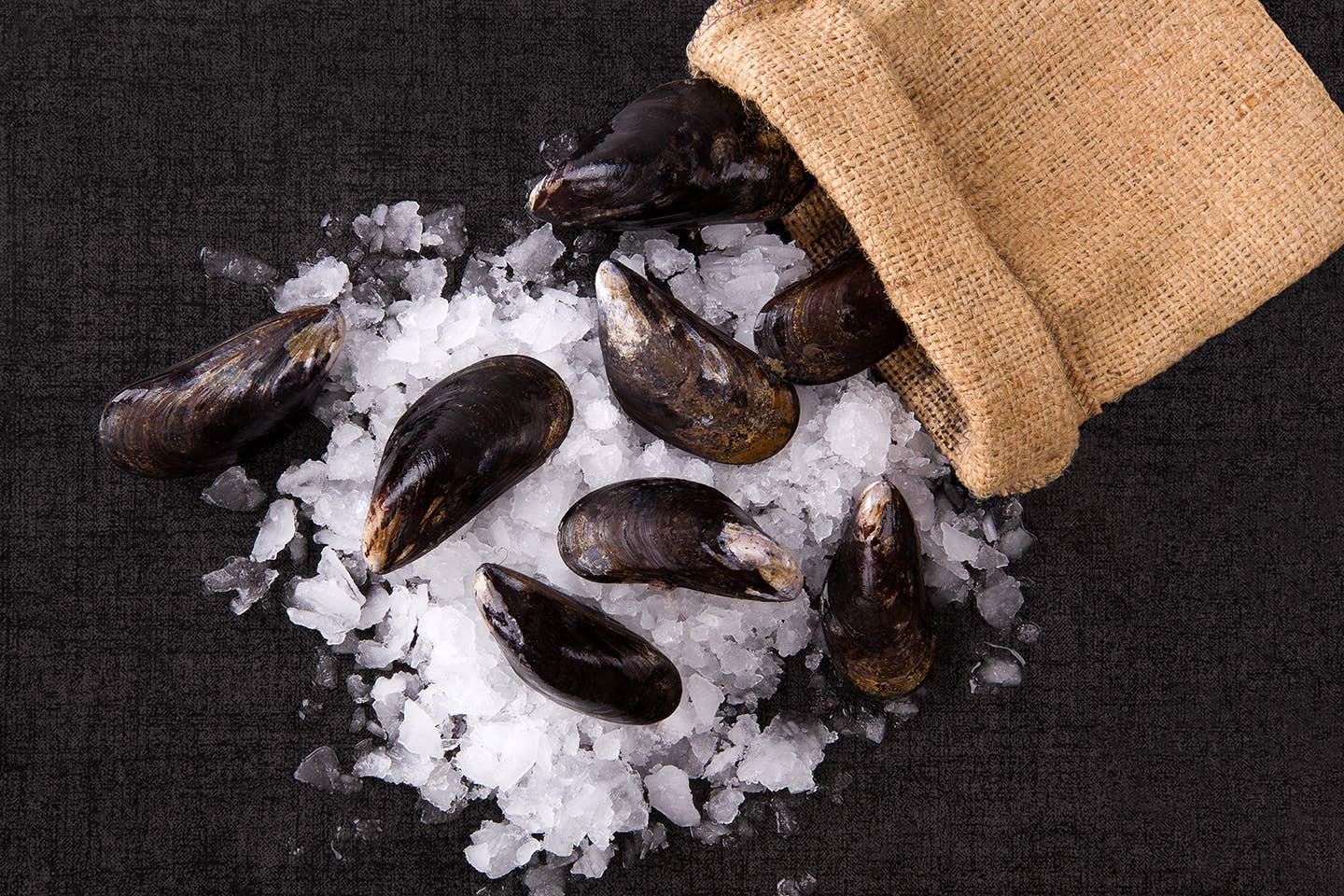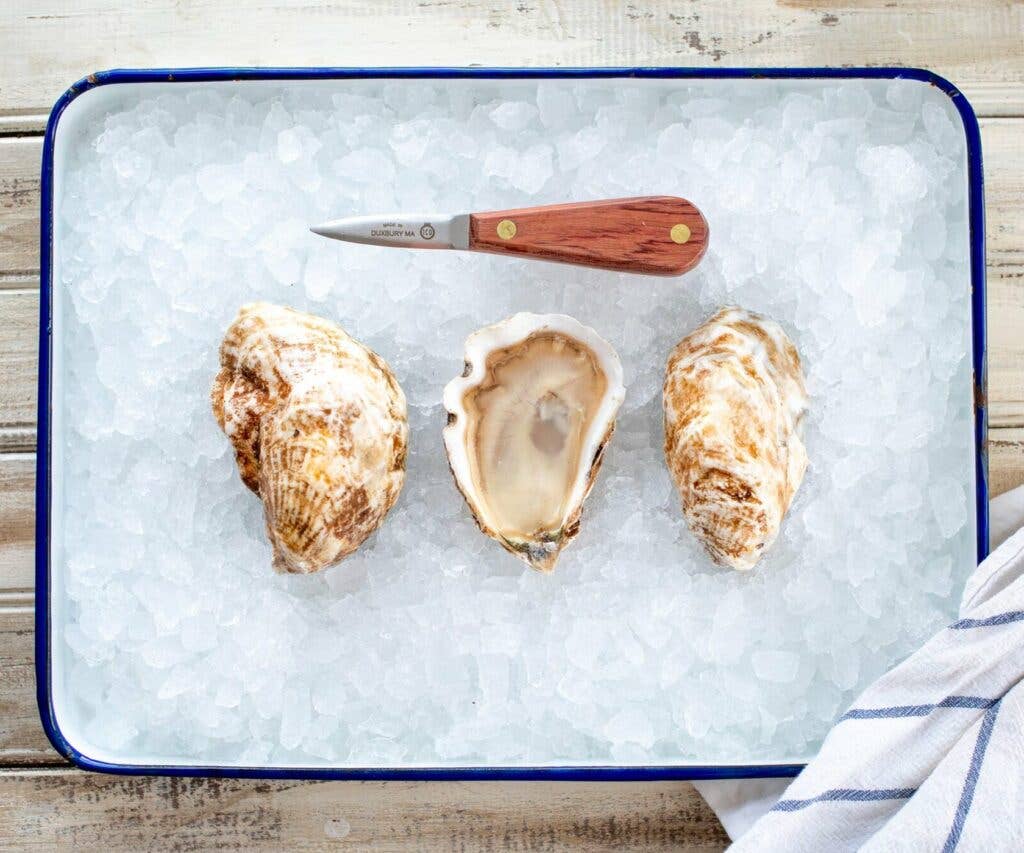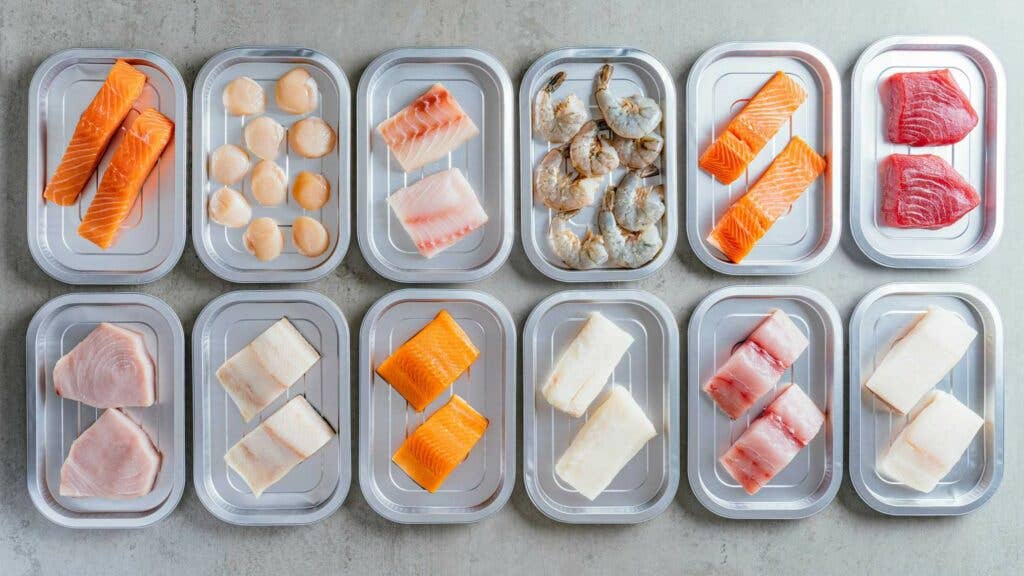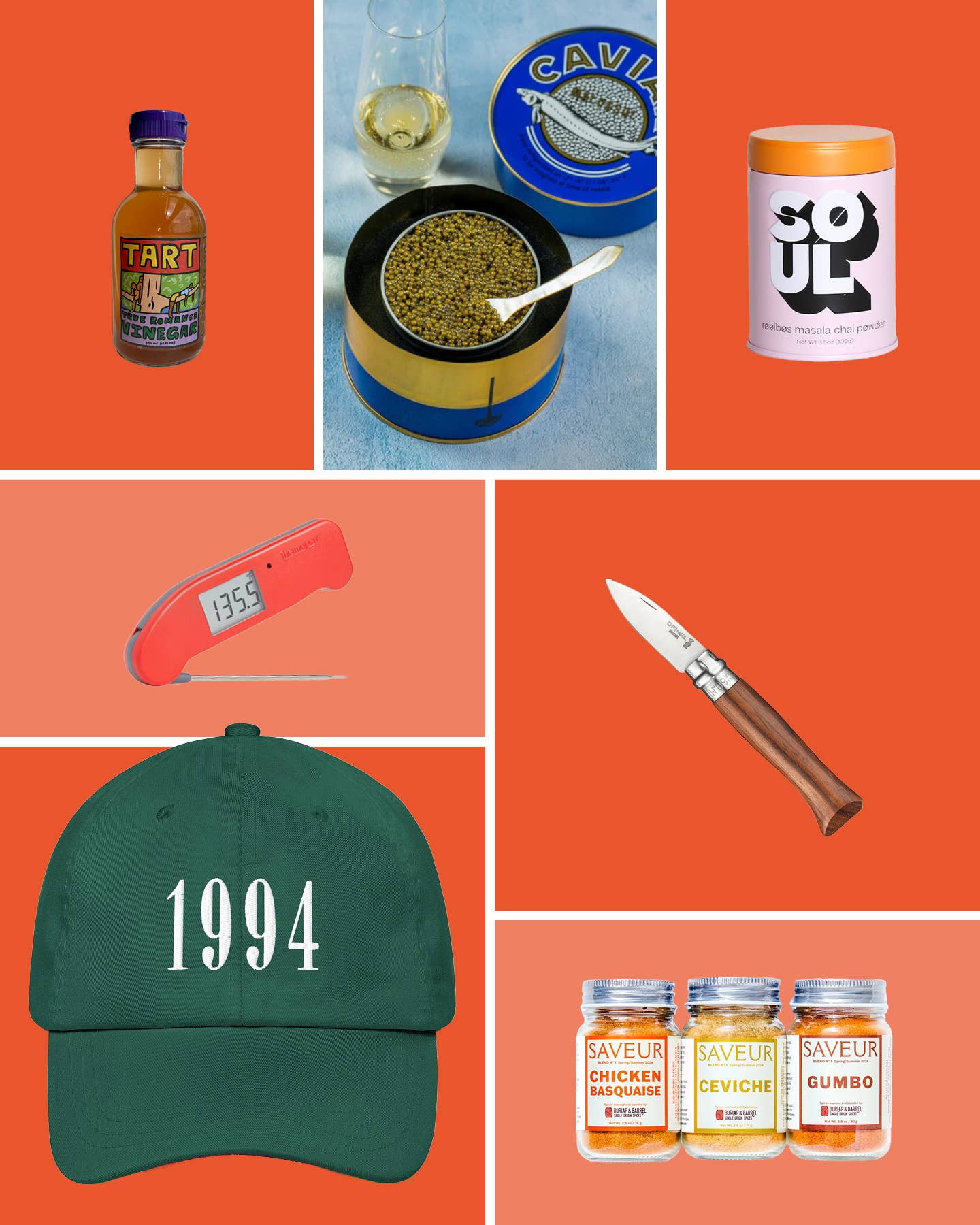The Best Places to Buy Seafood Online Bring Today’s Catch to Your Door
The world (wide web) is your oyster.

Great fresh fish can be tough to find. Supermarket fishmongers don’t always stock a wide selection, and landlocked folks—who lack the luxury of trekking down to the docks to buy straight from the boat—have even more limited options. Fortunately for home cooks, mail-order seafood delivery has both increased and improved over the past year, as seafood distributors who ordinarily serviced the restaurant industry pivoted to direct-to-consumer sales. Here are some of our favorite online sources for outstanding seafood to make decadent dinners like aromatic grilled swordfish kebabs or creamy seafood bubbly bake.
- Best Overall: Fulton Fish Market
- Best Value: ButcherBox Seafood Box
- Best Oysters: Island Creek Oysters
- Best Lobster: Luke’s Lobster
- Best Salmon: Alaskan Salmon Company
- Best Crab: The Crab Place
- Best Ready-to-Cook: Purefish
- Best Shelf-Stable: Safe Catch Wild Caught Tuna Fish Pouch
Features to Keep in Mind
Selection
Online seafood selections range from wild-caught whole fish to fillets of farm-raised seafood, and everything in between. Some sites specialize in a certain region, like Alaskan or Maine-sourced seafood, while others offer an ocean’s bounty of crustaceans and freshwater fish.
Subscriptions
Subscribing to an online seafood share is often more sustainable because you can buy from a community supported fishery, securing a share of local catch before it’s even out of the water. Shopping online also typically offers high quality seafood for a more affordable price, and takes the guesswork out of meal planning. Various subscriptions are available.
Shipping
Most seafood is shipped overnight with dry ice to stay as fresh as possible. Given the logistics, orders often have to be over a certain amount in weight and value to make the shipment worthwhile—consider sharing with a neighbor if you’re not ready to stock your freezer with five pounds of salmon.
Sustainability
Our oceans are not an all-you-can-eat buffet, so sustainability is a primary factor for the online seafood purveyors we recommend. To pick the most sustainable varieties, check out the Monterey Bay Aquarium’s Seafood Watch app, which monitors which types of fish are most sustainable to eat at any time.

Our Top Picks
Best Overall: Fulton Fish Market
This Bronx-based purveyor is the largest consortium of seafood wholesalers in the United States. It provides fish for many of New York’s finest restaurants - plus eateries nationwide- and also offers a well-oiled direct-to-consumer sales program. Home-sized, individually cryovaced portions of top quality fish are a huge selling point, as is an extensive shellfish selection. Subscribe to seafood shares, load up your freezer with assorted boxes, or splurge on specialties like uni, octopus, and caviar for a special meal at home.
Best Value: ButcherBox Seafood Box
For quick dinners in an all-in-one shipment, look no further than the 100% wild-caught seafood from ButcherBox. Taking the guesswork out of what’s for dinner, ala carte purchasing isn’t an option, but rather a pre-selected array including ready-to-cook Alaskan sockeye salmon filets, lobster claws, cod, scallops with no added water or chemicals, plus salmon burgers ready for the griddle. At $155 for almost seven pounds of freshly frozen wild seafood, plus free shipping, this is one of the best deals around.
Best Oysters: Island Creek Oysters
The darling of raw bars along the East Coast, Island Creek Oysters has been raising exceptional bivalves in the waters off of Duxbury, Massachusetts since 2000. In addition to retailing oysters and littleneck clams from its own and neighboring farms, Island Creek also offers excellent domestic caviar and an impressive array of European tinned conservas, all shipped overnight to anywhere in the continental United States. Shop samplers, pick specific varieties (like Sweet Neck oysters from Martha’s Vineyard or Wellfleet Oysters from their eponymous Massachusetts town), or buy in bulk to share with a crowd. Not sure where to start? $85 gets you two dozen oysters, plus a shucking knife and glove. (We've chosen some of the very best oyster knives here, too.)
Best Lobster: Luke’s Lobster
If you can’t go lobstering off the coast of Maine, opening a package with a chilled live lobster inside is the next best thing. Luke’s 1.25-1.5 lb fresh, wild-caught live Maine lobsters are sold in pairs of two, ready to be steamed, boiled, or grilled. Pricing starts at $110, including overnight shipping. Those who prefer a less alive seafood shipment can also purchase lobster tails, seasoned lobster meat, lobster rolls kits, and more Maine-sourced seafood like scallops, hake, and halibut.
Best Crab: The Crab Place
Even the best in-person fish markets rarely offer a ton of variety when it comes to live crustaceans, which is why The Crab Place is such a stand-out. This vendor ships either live or cooked, with a particular speciality in Maryland blue crab. You can even pick the size and sex of your hard or softshell crabs, which are sold by the dozen or bushel. The Crab Place also sells a handful of prepared products like crabcakes and picked meat, as well as Gulf shrimp and Chesapeake Bay oysters.
Best Salmon: Alaskan Salmon Company
As a fisherman-owned and operated direct-to-consumer platform, Alaskan Salmon Company directly connects consumers and fishermen. Used by restaurants and chefs across the country, this site lets you purchase fresh-out-of-the-water Copper River king salmon, sockeye salmon, and more of the seasonal catch. You’ll receive the highest quality salmon while supporting some of the most sustainable fisheries in the world.
This wild salmon is all sushi grade, so you can slice it up for poke or sashimi at home. Of course, it’s great cooked too. Salmon is sold in bulk, in five pound boxes with filets ranging from 8-10oz, so you can stock up and secure your share for salmon season. Salmon can be ordered at any time, and typically ships within a week of purchase.
Best Ready-to-Cook Seafood: Purefish
Fine dining seafood purveyors have launched a direct-to-consumer sustainable seafood delivery program that easily lets you replicate restaurant-worthy dishes at home. Purefish offers 6oz. fully trimmed center cuts—from saltwater striped bass, mahi mahi, ahi tuna, and many more—packaged on disposable oven-safe aluminum trays. Their goal is simple: Get dinner on the table in less than 15 minutes. Boxes start at $150 for four trays and can be customized to your liking. Feeling decision fatigue? Opt for a pre-curated version, like a grill-ready selection or nutritionist-curated omega box.
Best Shelf-Stable: Safe Catch Elite Lowest Mercury Wild-Caught Tuna Fish Pouch
Whether you’re stocking up the pantry, packing for a hiking trip, or just want a grab-and-go seafood option, Safe Catch’s 3 oz wild caught tuna packets are the best fit. Mercury- tested to be safe for kids, pregnant tuna lovers, and those with special diets, this tuna is high quality, robustly flavorful, and portioned into smaller servings than your typical 5 oz can for efficient meal prep and snacking. The packages are light enough to travel with and stack nicely in any cabinet. Wild Catch also sells salmon and sardines online.

Ask the Experts
Should I order fresh or frozen seafood?
“With freezing technology these days, both fresh and frozen seafood are great options,” says Curt Brown, Marine Biologist and Lobster Harvester at Portland, Maine’s Ready Seafood. “Fresh, local seafood is always a great option, but frozen options allow consumers to try a diverse array of delicious seafood items.”
Kyle Lee, founder of Alaskan Salmon Company, adds that “fresh” labels can sometimes be misleading. “For example, the traditional supply chain for most Alaskan salmon is that it goes through 7-10 middlemen frozen before it hits the grocery fish market labeled as "fresh" because it is thawed out and ready to be consumed that night. The quality deteriorates, the salmon is mushy, and gets a bad rep,” he says. “Purchasing frozen salmon online, directly from the boat, means it is flash frozen immediately after returning to shore, and the meat and flavor are preserved at peak freshness and maintain the quality until you unpack your order.” The fish featured on this list all fit into this description.
How should I store seafood that I order?
Once your shipment arrives, store it in the refrigerator if you plan on using it that night or the next day, Lee recommends. “However, if you are planning on storing anything longer than that, you need to store it in a vacuum-sealed bag (at minimum, 3mm thick) and place it in a freezer,” he said. If you don’t have a vacuum sealer, just push air out of bags while sealing. “This prevents freezer burn and extends the amount of time you can freeze your seafood, as well as gives some protection against sharp corners or other potentially damaging items in the freezer.” Use permanent markers to label seafood with the date frozen, and any additional details to make defrosting easy. For seafood fans who like to stock up or buy in bulk, a chest freezer is a worthy investment.
“On average you can store seafood in the freezer for up to a year,” Lee says. “It will start to lose its flavor and meat quality the longer you store it.” While anything can be frozen, he notes that fattier fish, like salmon and black cod, freeze better.
Keep Reading
Continue to Next Story










